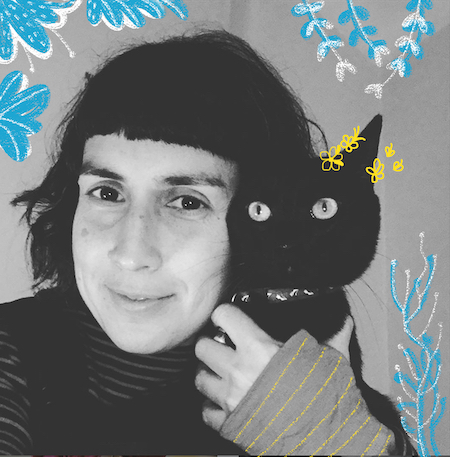
Daphne Sivetidis is an illustrator and graphic designer. She has an MA in Migration from the University of Sussex (UK) and has been active in many migrant solidarity projects as well as grassroots organising in Athens and beyond. She is partly self-taught but has also studied design at Central Saint Martins (UK) and at Kingston University in London (UK). Here, Daphne reflects among other things, on what is feminism to her, what interests her in participatory methods and collaboration, and what have cats taught her.
Daphne, how do you define yourself?
I have recently moved so I am in the process of re-defining myself. I currently see myself as a migrant, an artist, a mother and a cat lover.
What is feminism to you?
Feminism to me is mostly about taking space and being in solidarity with other women but I also think that feminism changes depending on the context. Being a woman in Greece for example brings different challenges. Also, I didn’t really realise how important feminism was until I became a mother.
I discovered feminism when I was around 13 years old because my mother was a member of radical feminist groups in London and she kept giving me feminist zines and books for teenagers.
Girls are Powerful: Young Women’s Writings from “Spare Rib” magazine was the main one that I read over and over again. It had different stories narrated by girls the same age as me about their every day lives and it made a big impression on me.
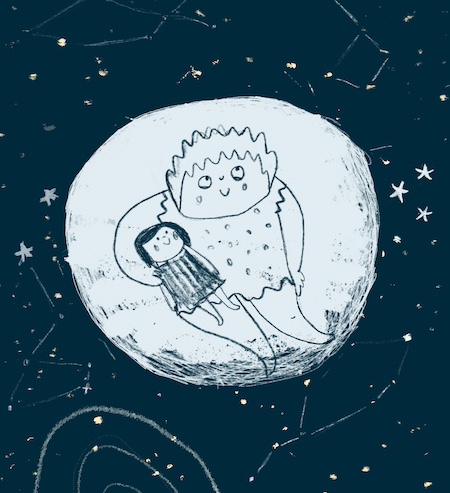
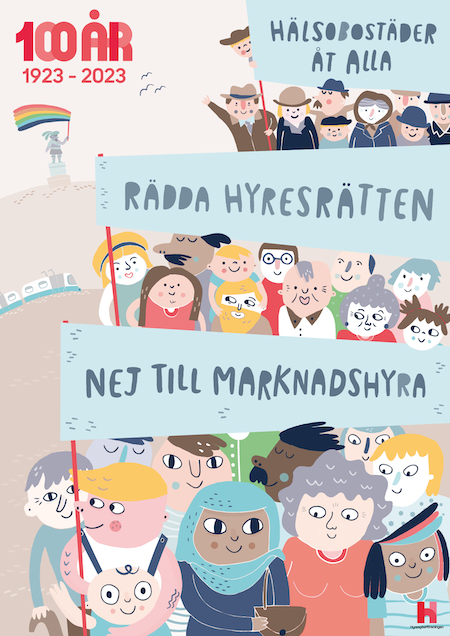
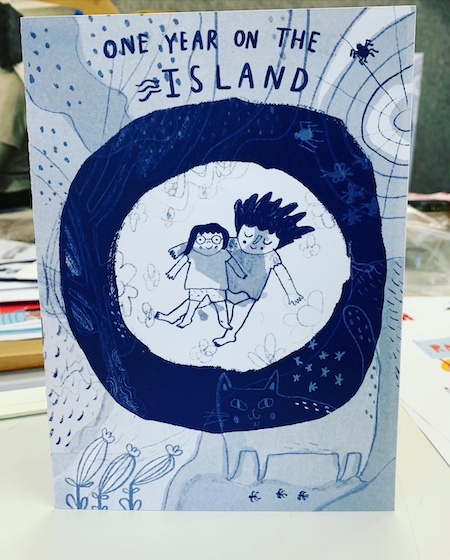
How did you become an illustrator?
I was always drawing little books, comics, stories and cats when I was a child. Then I had a drawing break when I studied Politics at University. I started again because I felt like it, and so I am mostly a self taught illustrator. I considered myself an artist when I started to get paid for professional work and when I started to get books published but of course it doesn’t have to be like that. Anyone can be an artist.
What aspects interests you in illustration, and design and art in general?
I am interested in new styles, in merging different styles, in quite experimental illustration and in making picture books for adults. I’m also interested in design that engages with the public and aims to disrupt or create some kind of social change.

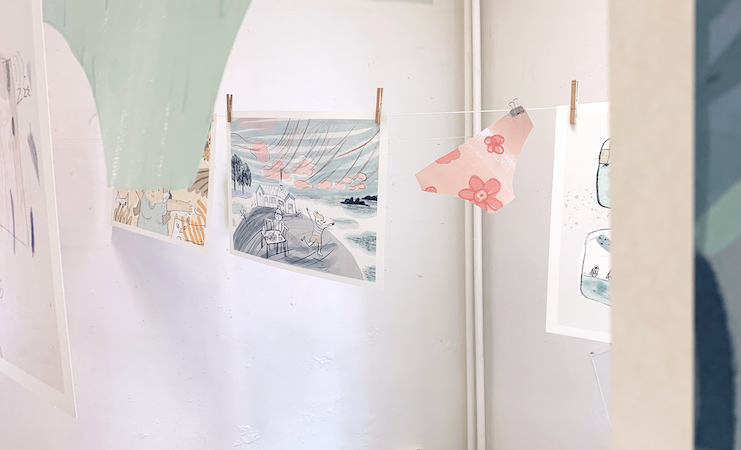
Do you have a favorite subject to draw?
Ha-ha, yes, its cats.
What is so special about cats?
They are magical, they have great characters and they are really good “work from home” companions. I think every illustrator needs at least one cat. Cats have taught me to be lazy, to be a good sleeper and to be myself.
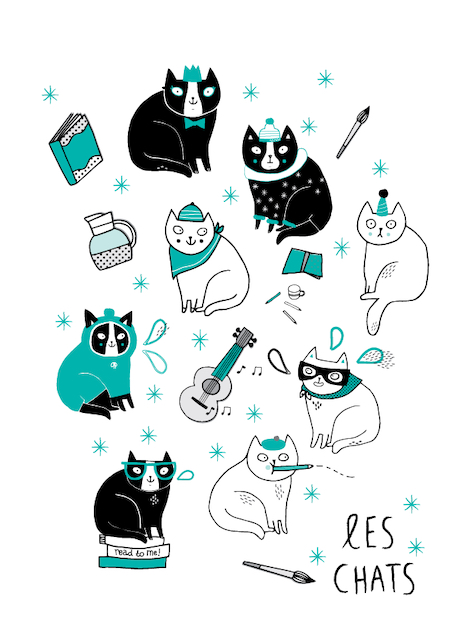
How do you get past creative blocks?
Sometimes I don’t, or it takes me a long time. Mobility helps: traveling, walking, swimming, moving to another place like a cafe or a library or being on a train or aeroplane.
How do you switch off?
I go to an island in Greece for a long time every summer, this is my switching off period and when I am there I put my phone away. Reading and swimming helps me to switch off also.

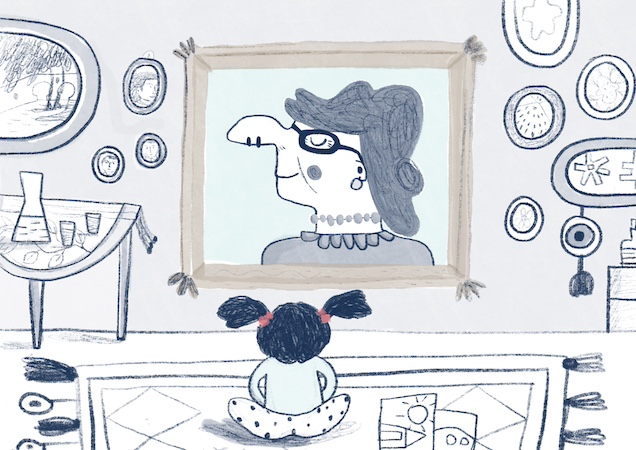
What interests you in participatory methods and collaboration?
I’m interested in it because I see political potential. It’s a way to engage people and activate places and ideas. I’m also interested in blurring the boundary between “expert” and “non-expert” and “teacher” and “learner” and this is a good way to do this.
Michael Bierut, an American graphic designer, design critic and educator, has said: “Much, if not most, graphic design is about communicating messages, and many of these messages are intended to persuade. This places its practice clearly in the realm of politics.”
Yes, I think that graphic design is not just for commercial purposes, it can be used to socially engage people and to persuade people to act – the Brexit campaign is a good example of the negative aspects of this.
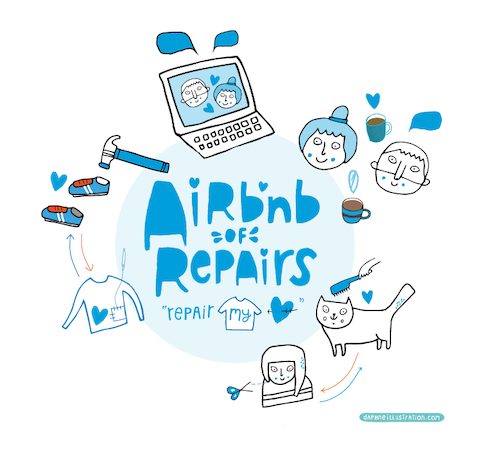
What artists, designers, feminists, etc would you say have influenced you the most?
Gemma Correll – because illustration can just be about good ideas; Beatrice Alemagna – because she dares to have a really unique style; the design duo Cachete Jack – because illustration can go really big; Cacao Rocks – I like the flexibility in his work; My artist/illustrator friends Marina Dimopoulou and Ifiyenia Kamperi — because they have influenced me through our collaborative projects. The feminists that have influenced me are mostly women that I am friends with. They have inspired me because they dare to be different and for the support that they show other women.
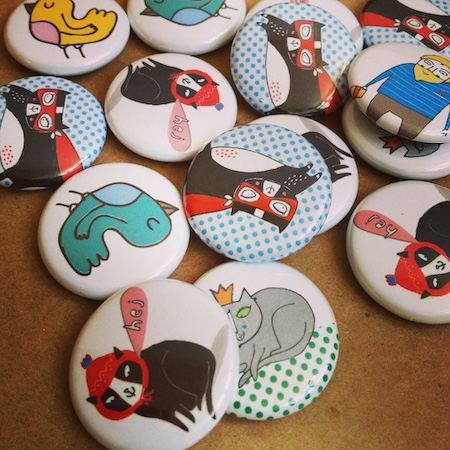
What’s next up for you?
More collaborations, more exhibitions, more socially engaged art involving local communities – I hope.
Get inspired!
Website: https://www.daphneillustration.com
Instagram: http://instagram.com/daphneillustration